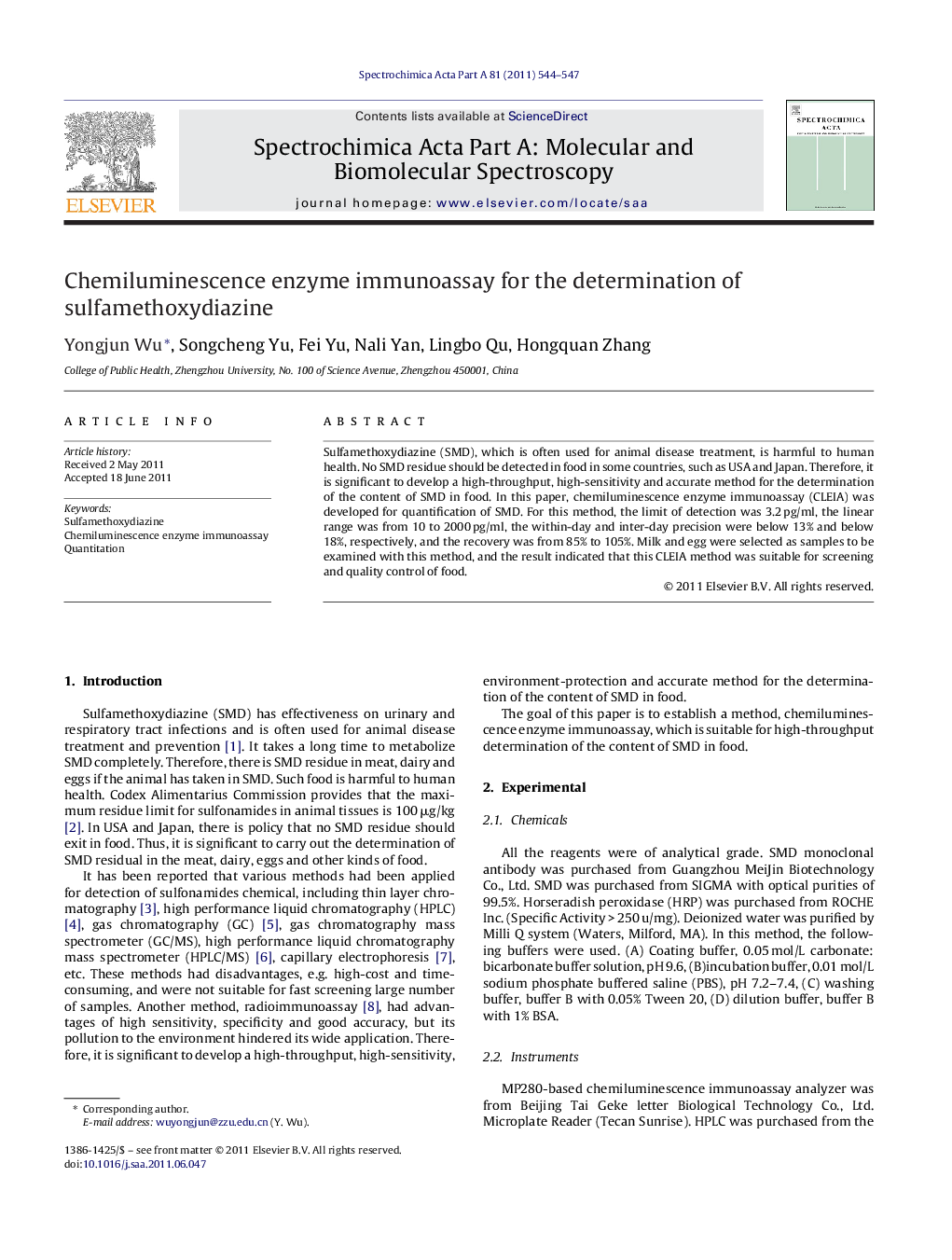| Article ID | Journal | Published Year | Pages | File Type |
|---|---|---|---|---|
| 1233589 | Spectrochimica Acta Part A: Molecular and Biomolecular Spectroscopy | 2011 | 4 Pages |
Sulfamethoxydiazine (SMD), which is often used for animal disease treatment, is harmful to human health. No SMD residue should be detected in food in some countries, such as USA and Japan. Therefore, it is significant to develop a high-throughput, high-sensitivity and accurate method for the determination of the content of SMD in food. In this paper, chemiluminescence enzyme immunoassay (CLEIA) was developed for quantification of SMD. For this method, the limit of detection was 3.2 pg/ml, the linear range was from 10 to 2000 pg/ml, the within-day and inter-day precision were below 13% and below 18%, respectively, and the recovery was from 85% to 105%. Milk and egg were selected as samples to be examined with this method, and the result indicated that this CLEIA method was suitable for screening and quality control of food.
Graphical abstractFigure optionsDownload full-size imageDownload as PowerPoint slideHighlights► Chemiluminescence enzyme immunoassay was established successfully to quantify sulfamethoxydiazine. ► This assay decreased the limit of detection by thousands of times comparing with the reported methods analyzing sulfametoxydiazine. ► This method is suitable for high-throughput determination of the content of sulfametoxydiazine in food.
